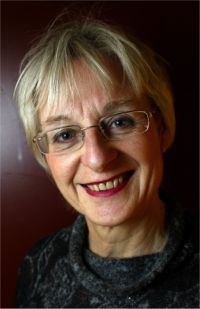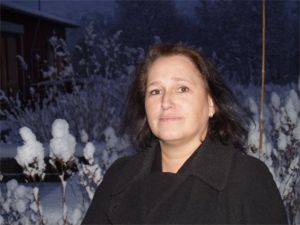New goals in Tromsø
Last year the University of Tromsø was singled out as having the worst gender balance in the country. Director of personnel Håvard Bekkelund hardly remembers this. Because things are changing fast.

The University of Tromsø used to be called “The Red University”. Many left-wing researchers have been employed here. But the university has a conservative history with regards to gender. At the University of Tromsø there have been few female professors and few women in top academic positions.
At the bottom
In October 2004 the Committee for Mainstreaming – Women in Science visited Norway’s northernmost university. The chair of the committee, Professor Kari Melby, declared that University of Tromsø had the worst gender balance in the country. And the numbers she presented were discouraging.
In 1982 the ratio of male professors at UiTø was 88 per cent. In 2004 it was 87.3 per cent. And even though the goal of the the university action plan for 1995-97 was 50 per cent female academic staff, the 2004 number was only 33,5 per cent.
Melby was not pleased. "They have had a long time to improve the female ratio in a period where the number of female students and research fellows has been at an all-time high. Thus the female ratio should have increased," she told the magazine Bladet Tromsø.
Committee without focus
There has been no lack of enthusiasts working for gender equality at the University of Tromsø. Even so, the work has been slow. And in 2000 the Gender Equality Committee was discontinued. The committee had been around since 1975.
Anka Ryall, chair of the Gender Equality Committee in 1999, commented on the situation right before the decision to discontinue was made. She said that the gender equality action plans that existed were too unfocused. And there was an insuperable gap between the idealistic gender equality goals and the agreed upon means to get there. She felt bad about the closure of the Gender Equality Committee, but she did not want to chair a committee with no purpose.
After the discontinuation of the Gender Equality Committee, the responsibility of gender equality was placed with the University Director. Each faculty appointed a Gender Equality Ombud to supervise the hiring process.
Everyone’s responsibility
Four years later the new model for gender equality work had not solved the problems, as was shown during the visit from the Committee for mainstreaming. But perhaps it was a question of effort? Because Tromsø now is singing a different tune.

"During the last nine months the ratio of female professors has gone up from 11,9 per cent to 15 per cent. Things are going our way, and we will reach a 25 per cent female ratio in 2010," says Director of Personnel and Finance Håvard Bekkelund. He shares the responsibility of the gender equality work at the university with Sølvi Anderssen, who heads the Department of Research and Academic Affairs. They both believe in mainstreaming the gender equality work in Tromsø.
"Today each faculty must have its own action plan for gender equality. The Department of Personnel and Finance and the Department of Research and Academic Affairs have the central responsibility for the gender equality work. These two departments meet with Centre for Women’s Studies and Women in Research and pro-rector Gerd Bjørhovde to follow up on the gender equality work," Bekkelund explains.
"If the responsibility is given to one person only, all the work tends to get stuck there. Rather than having a committee with a dedicated leader, we have mainstreamed the gender equality work, so that everyone is responsible," adds Anderssen.
Goal oriented measures
More female researchers at the universities need to qualify for the top positions. This is the main challenge for the gender equality work, according to Bekkelund and Anderssen.
"We have more than 50 per cent female research fellows and approximately 37 per cent female associate professors at the university. Still there are few women in top positions. This means that we now need to pay attention to the women in lower positions, and get them to qualify for advancement," says Bekkelund. This is especially important at the Faculty of Medicine, where there are 51,7 per cent female associate professors, and only 12,7 per cent female professors.
To prevent women from leaving, the university has set several measures in motion. Female researchers may apply for extra money to necessary equipment and additional time for research.
"We have already observed that women have benefited from these measures and become qualified for professorships", says Anderssen, and adds: "Even though the female ratio of associate professors is high, we cannot assume that this will be solved by time alone."
Calling women
Another important measure for improving the gender balance is so-called callings, when a person is directly chosen for recruitment without prior announcement of the vacancy.
Since the University of Tromsø decided to use this measure, more women have been recruited to professor II-positions.
To stimulate hiring of women in professor II-positions, the university hands out a minimum of five two year salary grants of 100.000 NOK to faculties that hire women.
"We hope that these efforts will encourage more female researchers at the university to intensify their work with qualifying for top positions," says Anderssen.
Accepting imbalance
To get more women qualified for top positions, Bekkelund maintains that they may have to accept gender imbalance for some time in committees and boards at the university.

"It is a question of priorities. At the university we have a number of seats in committees and boards that are filled by academic staff. This work is time-consuming, and it stops or delays the qualification process. This affects female academic staff in particular, who may need to fill several seats to fulfil the rules of gender balance on boards and committees. Perhaps we must, for a while, accept that this time is rather spent on qualifying for professorships," he says.
The first goal
The University of Tromsø has decided that their first goal is 25 per cent female professors in 2010. Bekkelund and Anderssen feel that this goal is within reach. But it is also an ambitious goal.
"We have had a female professor ratio of 10-12 per cent for many years now. Thus, it is quite positive if we manage to increase to 25 per cent in five years," maintains Bekkelund.
"To achieve this, approximately 40 per cent of new professors in the years to come must be women," Anderssen states.
But even if the two of them feel that this is an ambitious goal, they do not think that 25 per cent female professors are enough.
"After 2010 we will of course continue the work, this is an intermediate aim towards a more equal university," says Bekkelund.
Callings have become an important mean for gender equality at several institutions. This is what is called headhunting in the business world. Read more in the section for measures. Since the university decided to use this measure to promote gender equality, several women have been hired as associate professors.
